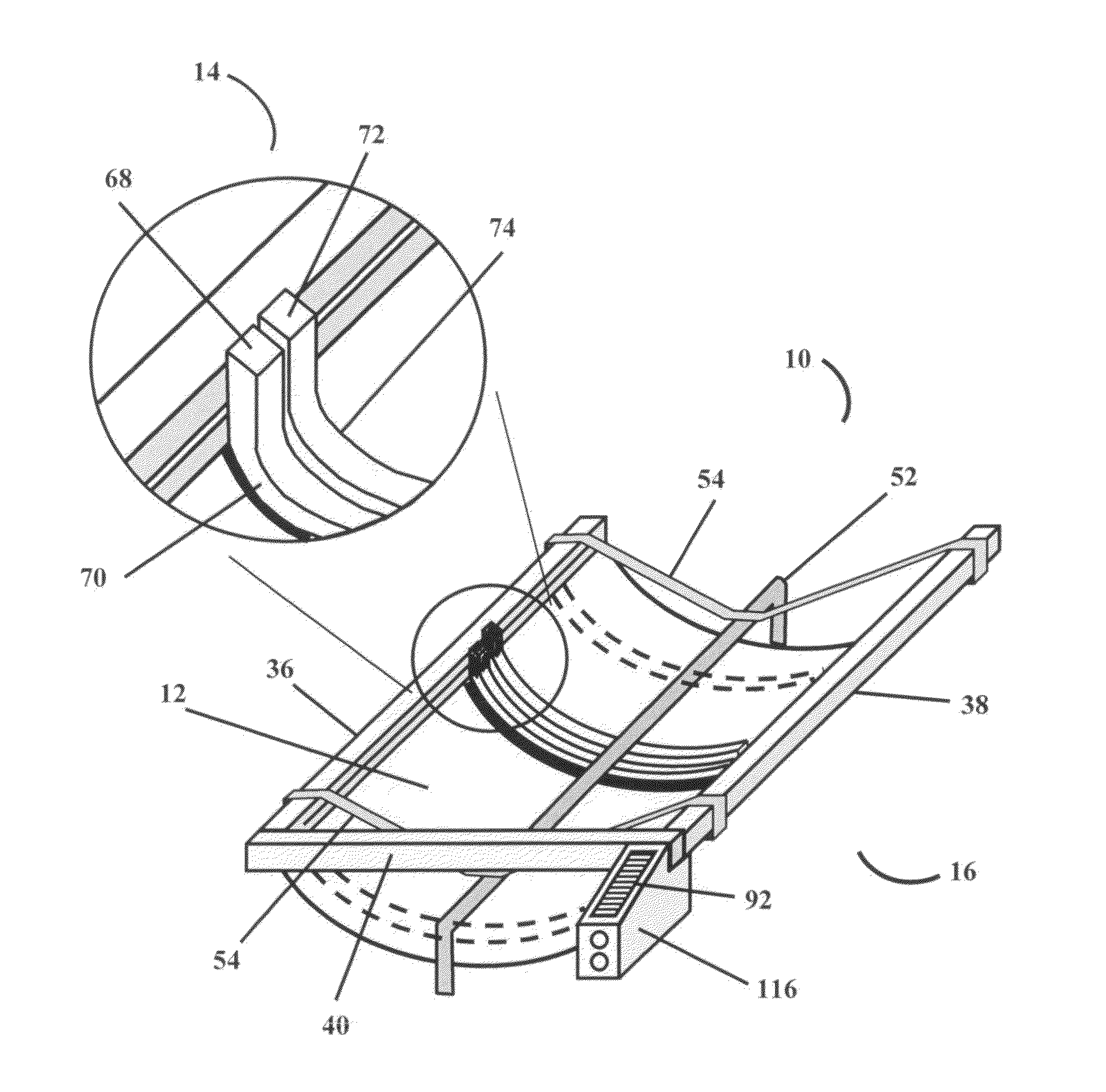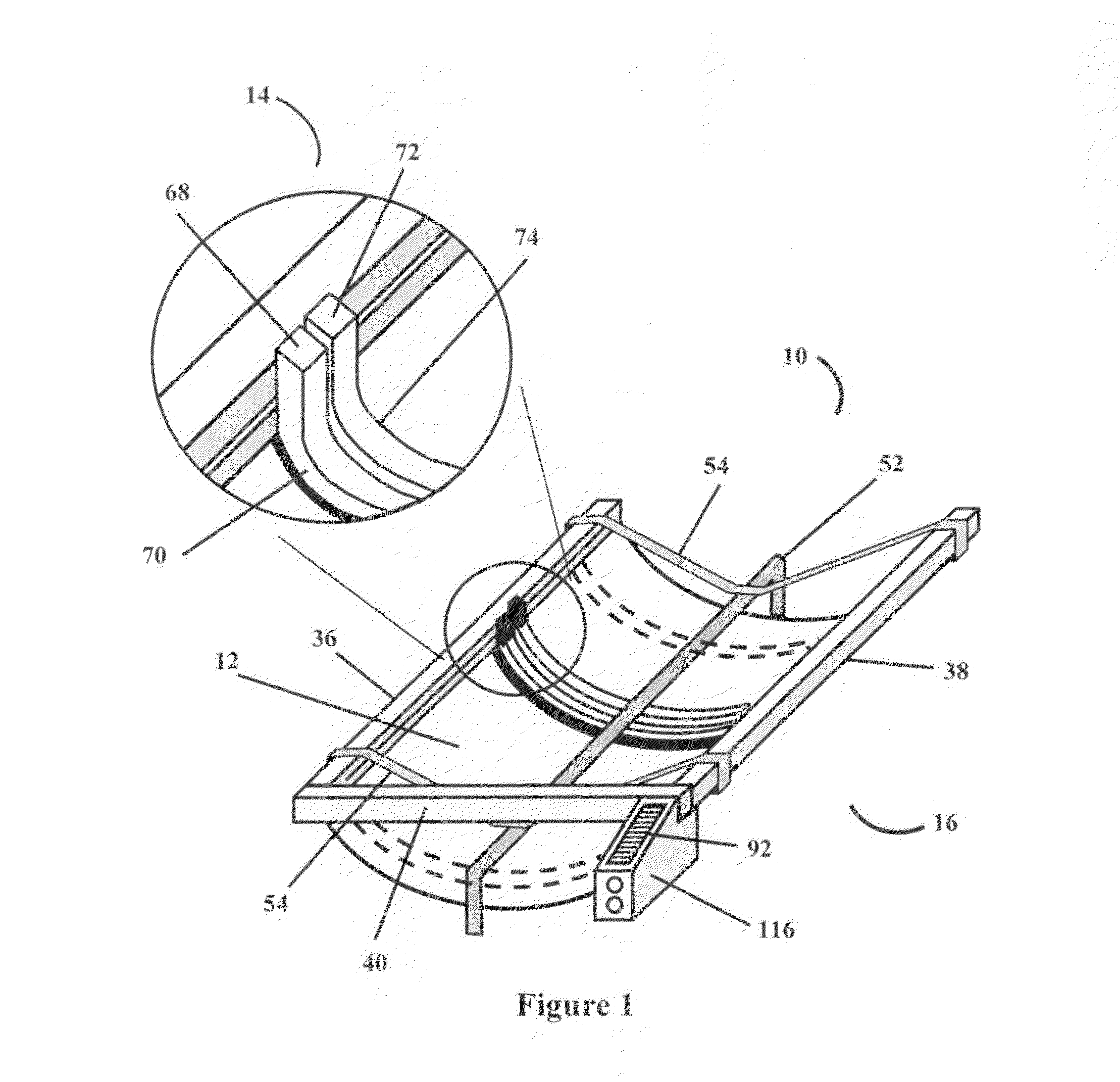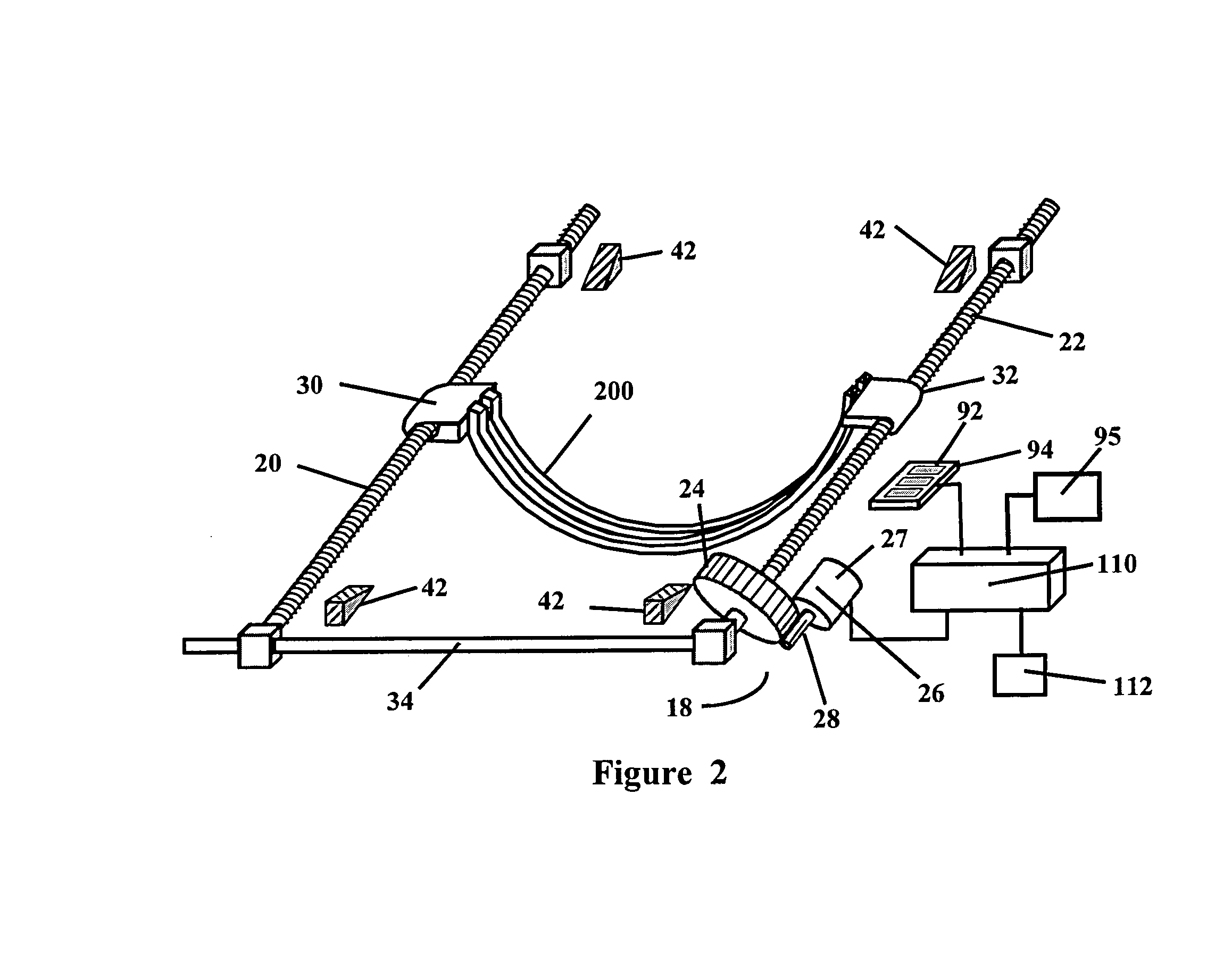Ramp cleaning device for solar energy technologies
a solar energy technology and cleaning device technology, applied in the direction of carpet cleaners, vehicle cleaning, cleaning using liquids, etc., can solve the problems of reducing the efficiency of the panel, requiring cleaning crews to clean the panel, and laborious routine cleaning
- Summary
- Abstract
- Description
- Claims
- Application Information
AI Technical Summary
Benefits of technology
Problems solved by technology
Method used
Image
Examples
Embodiment Construction
[0074]As used herein, the term “solar energy technology” is intended to mean either a curved reflector panel or a flat solar panel.
I. Curved Trough Reflectors
[0075]Referring now to FIG. 1, an autonomous cleaning device and system for a trough reflector panel is shown generally at 10. In the example illustrated, the device 10 is mounted over a curved trough reflector 12. The device 10 and the curved trough reflector 12 may be located on a pedestal or frame such as in a trough reflector park or may be located on the side or rooftop of a residential or commercial building or on the ground. A person skilled in the art will recognize that although a single trough reflector is referred to throughout, it is to be understood that a plurality of devices 10 may also be used with a plurality of curved trough reflectors 12. The device 10 can be used for solar thermal applications such as passive water and air heaters, steam turbines, air conditioning, desalination plants, and the like, and also...
PUM
 Login to View More
Login to View More Abstract
Description
Claims
Application Information
 Login to View More
Login to View More - R&D
- Intellectual Property
- Life Sciences
- Materials
- Tech Scout
- Unparalleled Data Quality
- Higher Quality Content
- 60% Fewer Hallucinations
Browse by: Latest US Patents, China's latest patents, Technical Efficacy Thesaurus, Application Domain, Technology Topic, Popular Technical Reports.
© 2025 PatSnap. All rights reserved.Legal|Privacy policy|Modern Slavery Act Transparency Statement|Sitemap|About US| Contact US: help@patsnap.com



